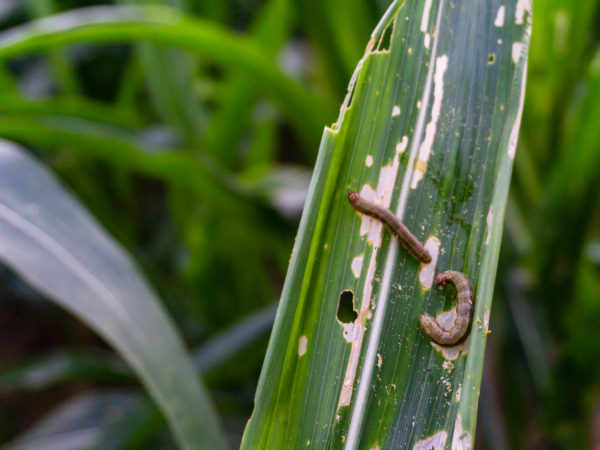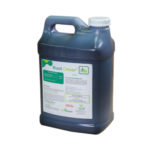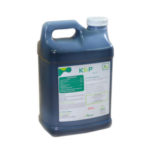23 Oct Fall Armyworm Recovery with Root Driver and K&P
Fall Armyworm Recovery with Root Driver and K&P
Fall is the time of year to be aware of different pests and insects. One of the most common pests during this time of year is the fall armyworm. Fall armyworms are notorious for eating sod and turfgrass in sod farms and golf courses. You may spot them in your crop fields too, however. If you are currently experiencing symptoms of fall armyworms, you will first need to treat them by applying an insecticide. Even after ridding your farm, sports field, or golf course of fall armyworms, it is important to have a good fertility program in place to bring you back from the damage. This week, Get Amped Up profiled Amp Agronomy™️ products Root Driver™️ and K&P™️ that will help you recover from the damage fall armyworms leave behind.
The Fall Armyworm and Infestation Symptoms
The fall armyworm got its name by traveling in small “armies” and eating everything in its path. A fall armyworm is usually green or muddy brown in color with a distinguished horizontal black stripe running down each of its sides. Fall armyworms are usually noticeable around the months of July through the end of October. It is very common for an outbreak to occur after heavy rainfall delivered by a tropical storm or hurricane. You may also spot a cluster of their eggs on the siding of a building, tree bark, or near flood lights that may attract them.
Fall armyworms tend to prefer grasses like coastal bermudagrasses, fescues, ryegrasses, and bluegrasses, but small crops are also subject to infestation. If you have bermudagrass on your golf course, sports field or sod farm, be on the lookout. You may notice small brown patches with chewing or “skeletonizing” of the leaf blade, creating a window pane sort of look in the grass blade. Lastly, you may visibly see a fall armyworm in your turfgrass or crops.
Treatment & Recovery
If you do in fact suspect a fall armyworm invasion, there are numerous effective insecticides you can apply to treat a fall armyworm problem. Effective insecticides can include bifenthrin, carbaryl, esfenvalerate or permethrin, for example. Be sure to talk with your crop consultant on insect control.
When it comes to recovery, a combination of Amp Agronomy products, Root Driver and K&P, will help your turfgrass return to normal. First, you will want to apply Root Driver at a rate of one to two quarts per acre as the phosphorus will help with accelerated root growth and development. This helps the grass become strong and established again. The potassium component of K&P+ is for a two-part stress relief: 1) stress from the damage the fall armyworms have already caused and 2) stress from the select chemical you chose to apply to your turfgrass or crops as a means of treating the fall armyworm infestation. Apply one to two quarts per acre for foliar applications. Inject at a rate of two to four quarts per acre for controlled irrigation.
Both Root Driver and K&P use Catalyst TechnologyTM to get nutrients to your turfgrass as efficiently and quickly as possible. Catalyst Technology protects nutrients by forming a net-neutral particle that keeps the nutrients from getting tied up in the soul. Our patented UHDC sizing process nano-sizes these molecules, which enables increased plant uptake, immediate entry into the plant’s cell walls, and availability. To visit the K&P product page, click here, or check out another blog on K&P and Plant Stress. For more information on Root Driver, click here.









